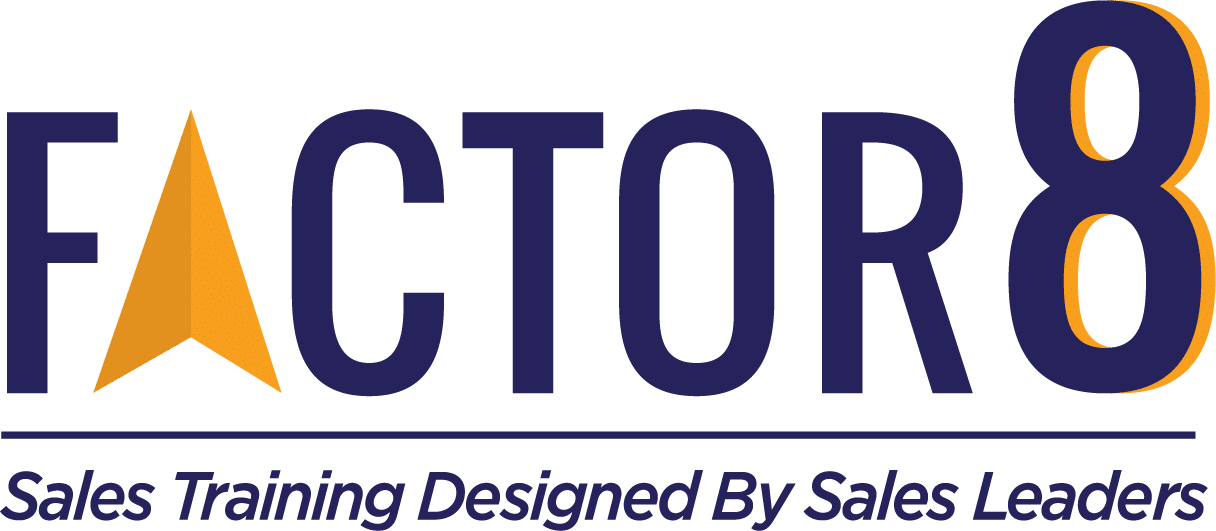5 Tips to Maximize Your Sales Training Investment
After you’ve hired a sales training vendor, there are a series of questions you need to answer in order to ensure you’re getting the most out of your sales training investment, like:
- How do I maximize sales training ROI?
- How do I measure training success?
- How do I get results FAST?
Having been both the vendor and the buyer in this equation, I definitely have some insight to share. I’ve made mistakes as the Training Director hiring a sales/sales leadership training vendor, and I’ve had clients do some really smart (and less than smart) things.
Although I could write about this topic forever, I’ve narrowed it down to my top 5 tips to maximize your sales training investment.
1. Customize the Customization. Then customize that. Twenty years ago, I paid a vendor $15,000 extra to customize the training for my company. I spent countless hours sending them examples, marketing data, and websites. I forwarded redacted emails and unpublished case studies. I just KNEW they would get the “real feel” for how special our snowflake was. The result?
The vendor added one half-page sheet to the back of the workbook with two custom role plays. TWO! The pages weren’t even numbered with the rest of the workbook. Total afterthought! Literally, nothing else was custom.
Ready for the vendor flipside? Six years ago we up-leveled all our workbooks for Factor 8. This meant I couldn’t build custom workbooks from scratch anymore for clients (the downside of totally custom is a less professional look – even a few errors). Now each of our course workbooks of about 10 pages has around 15 sections in bold red font that our Advisors tailor prior to delivery. It might be the customer’s language, an industry example, a customer voice example, specific sales objections, etc. During the live interactions, our coaches play their sales calls, coach actual delivery, and will give custom samples/scripts of every skill. That’s customization!
Tip: Get an actual list of what is tailored to your organization, its format, and when/how it is delivered.
2. Require Manager Involvement. Note: I didn’t say attendance. You need attendance AND involvement! Back when I was delivering training in an enablement organization, we were afraid to invite all the sales managers to our training. They were so busy and important (and let’s be honest, a little rude). As I gained more confidence, I would meet with them 1:1 after the training with tips on what we trained and what to look for. As I got busier, I would schedule a 15-minute meeting so I could do this all at once. When I was put in charge, I required them to come AND met with them for 30 minutes afterward.
Guess what? They still couldn’t coach the skills. Sure, they attended the training, but they didn’t participate. They didn’t come and play to win as if they, too, would be graded on their adaption of the skills. They half-listened, did some email, smiled and nodded, and stole the stage as often as possible to give sage advice.
Vendor Flipside: At Factor 8, we meet with managers before the training, require attendance at the training, train the managers on how to coach the skills after the training, give managers 3+ tools to make it easy to support and coach the training, then do a follow-up meeting with the managers on how skills went, AND certify the managers to certify the reps on the skills. It may seem like overkill, but trust me, it works.
Your ROI will be cut in half if your managers aren’t underlying the importance of using the new skills and coaching their execution. Go overboard making sure they are trained, incentivized, and supported by your vendor to do this!
3. Measure Your Heart Out! If you aren’t crystal clear on the results, KPIs, and metrics that should be impacted by the training, then you’re not ready to outsource sales training. (Really, a vendor just said that!) In fact, ask the vendor what numbers they expect to move with this engagement (and don’t hire them if they don’t know!) At some point, you’ll have to show your sales training ROI, so define during the interview stage what success looks like and then go get a 3-6 month baseline on these metrics. As a training manager, I was nervous early in my career to do this. It only took one sales leader saying, “You are not solely responsible for the 35% uptick in XYZ…!” for me to start backing down and measuring success anecdotally or with smile sheets. As I grew in my career, all I did was add two words: “contribute to.” If we measure pre and post, we can all SHARE the credit!
Vendor Flipside: I love a case study. Number one reason I don’t have one on every client? They don’t provide us with their reporting. The leader pulls the trigger on the contract and then sales managers or the enablement team are left to execute and the ask never bubbles to the top. In fact, I’d love to take contracts based on the up-side (we get paid when you improve) and have offered it many times in the past, but the baseline metrics and results weren’t available from the client.
4. Get Leadership Involved (more than they are). How do I know they aren’t very involved? I’ve had about 3 clients out of 300 who were. As a training leader, I had about none. Why is this critical? Because your attendees determine how important the training is based on what the leader says, does, and spends money on. Even if you have to write the script for the VP to kick off the meeting and send over the questions they need to ask in their 1:1 meeting afterward, take the time and do it. Otherwise, you may be the flavor of the month.
Vendor Flipside: They’re my favorite three clients ever. And when they ask for anything extra, they get it. I’ve helped them get jobs 10 years later, spoken free at their conferences, and featured them on our blogs. When a leader lends their time, voice, and stature to training, it will literally change the organization’s culture. Help convince them they’ll get more ROI by being involved. Make it easier on them with cheat sheets and reminders. These clients get double their money’s worth.
5. Focus on Long Term. Ever met with an internal client who wants you to train 5 things in 20 minutes? Me too. Try every single sales leader ever. Here’s why: Most people don’t know the difference between telling and training. That’s why their people don’t change their behavior after being told. Folks, if you want people to change what they’re doing, the training will take 5x longer than you want it to AND the support “tail” for the training will be months, maybe even years. Don’t make training an event – studies show they’ll remember about 30% of what is taught. The best leaders get this fact:
Training isn’t something you did, it’s something you do.
Vendor Flipside: Events are fun. They’re low risk and high reward. We often would have better selling days during training than normal days (live calling during training). Lots of energy, buzz, and results. But if that’s all your vendor is doing, reconsider. What about keeping skills alive? Pulling the buzz forward? Seeing skills move from the classroom to the sales floor? 15 years ago we offered a 1-day post-training follow-up. Then 90 days virtual. Now we do one-year contracts. It’s the right thing to do and the right way to do it. Doesn’t fit the SKO? Hire a speaker instead.
If you’re evaluating sales training, we’re here to help. Fill out the form or email info@factor8.com and let us know how we can help.
Want more information on how to maximize your sales training investment?
Contact us today to request information on our customizable virtual sales training programs
available for reps (and managers).

